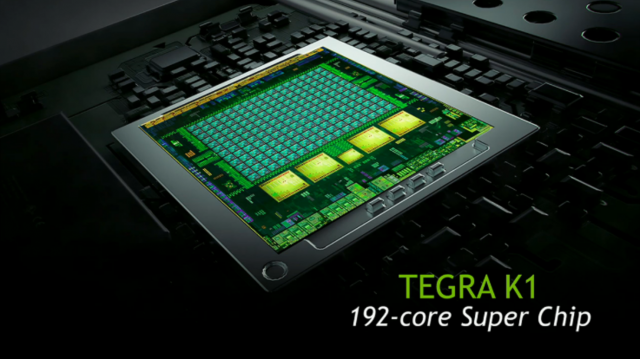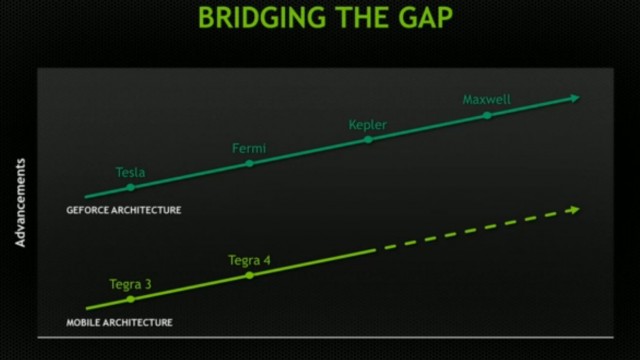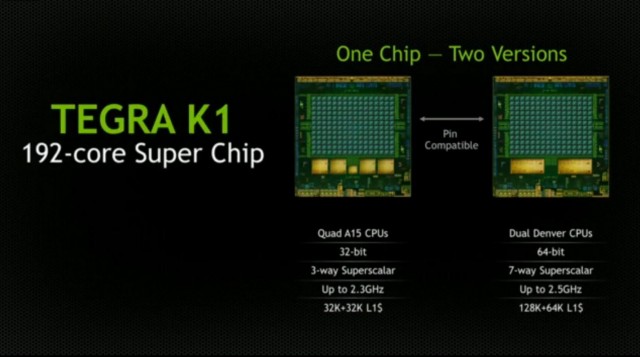
In their CES Press event, Jen-Hsun Huang co-founder, President and CEO of Nvidia has unveiled the next step in their Tegra mobile computing platform, announcing the TegraK1 a 192 Core Super Chip, a setup which they claim is bridging the gap between their mobile Tegra devices and their Kepler desktop devices.

The Tegra K1 runs in the familiar 4+1 CPU configuration of previous Tegra 3 and 4 SoC’s but is paired with 192 GPU cores, upping the 72 GPU cores of the Tegra 4. The GPUs on the Tegra K1 are CUDA(Compute Unified Device Architecture) compatible that are running in Parallel giving developers direct access to the individual cores. Nviida intends for the Tegra K1 to not only be the driver behind the next generation of tablets and smartphones but also to drive new 4K Ultra HD Televisions as well as new consoles, and cars.

There will be two versions of the Tegra K1 released, a 32-bit Quad-Core ARM Cortex A15 as well as an Nvidia-designed, fully custom 64-bit Dual-Core Denver-based Tegra K1 based on ARM’s ARM’s v8 64-bit system. The A15 Quad-Core version will come with a 2.3GHz clock and be available in the first half of this year, while the Dual-Core Denver CPU’s will be able to be clocked at 2.5GHz and arrive in the second half of this year.
When we will see devices running with the new Tegra K1 chips is not yet known, but we were shown a demo of the 64-Bit Tegra K1 running on Android, it was quite a smooth transition between home screens.
Are you wanting a device running an Nvidia Tegra K1? Will you wait for the 64-bit or is the 32-bit version exciting enough for you?



